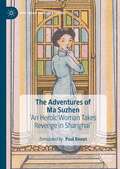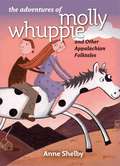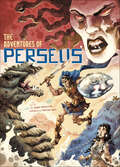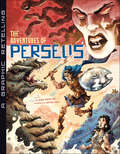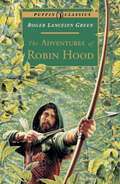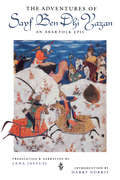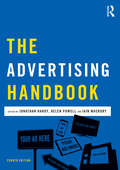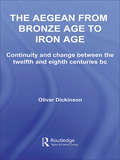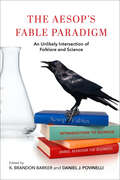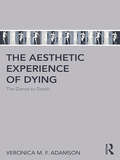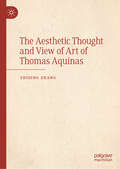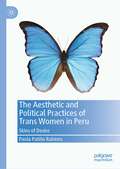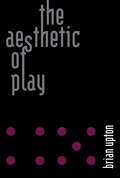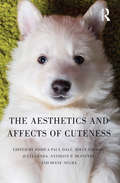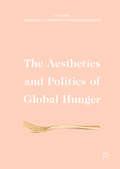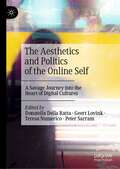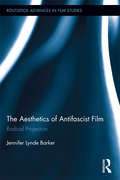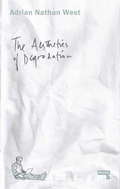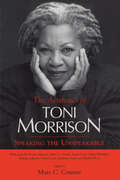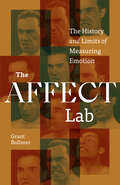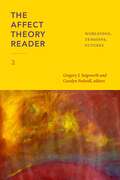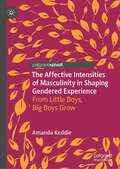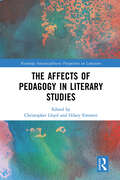- Table View
- List View
The Adventures of Ma Suzhen: 'An Heroic Woman Takes Revenge in Shanghai' (East Asian Popular Culture)
by Paul BevanThe comic novel, The Adventures of Ma Suzhen, was written during a highpoint in the popularity of xia “knight-errant” fiction. It is an action-packed tale of a young woman who takes revenge for her brother, Ma Yongzhen, a gangster and performing strongman, who has been murdered by a rival gang in China’s most cosmopolitan city, Shanghai. After publication of the book in 1923, the character of Ma Suzhen appeared on stage, and subsequently in a film made by the Mingxing Film Company. The book version translated here, displays a delightful combination of the xia and popular“Mandarin Ducks and Butterflies” genres, with additional elements of Gong’an “court case” fiction. The translation is followed by an essay that explores the background to the legend of Ma Suzhen – a fictional figure, whose exhilarating escapades reflect some of the new possibilities and freedoms available to women following the founding of the Chinese Republic.
The Adventures of Molly Whuppie and Other Appalachian Folktales
by Anne ShelbyCombining traditional Appalachian folktale plots with a contemporary sensibility, writer and storyteller Anne Shelby creates fourteen lively, original stories of a funny, magical, yet familiar world.Many of the stories feature a girl named Molly Whuppie, who is clever, brave, and strong. Encountering witches, giants, an ogre who refuses to do housework, unwanted boyfriends, and all manner of conundrums, Molly manages to outwit them all with a potent combination of nerve, trickery, and plain luck. Also appearing in the stories are Molly's sisters Polly and Betts, the famous Appalachian hero Jack (Molly saves him a few times), and three cornbread-baking mice.These delightful and often surprising stories are sure to appeal to readers and listeners of all ages who enjoy an adventurous tale well told.
The Adventures of Perseus
by Mark WeaklandIf you asked Perseus if looks could kill, he would give you a definite yes! Discover how Perseus, with help from the gods, avoided the stony glare of the hideous gorgon Medusa and became a hero. Follow Perseus' exciting adventure in graphic novel format.
The Adventures of Perseus
by Mark WeaklandIf you asked Perseus if looks could kill, he would give you a definite yes! Discover how Perseus, with help from the gods, avoided the stony glare of the hideous gorgon Medusa and became a hero. Follow Perseus' exciting adventure in graphic novel format.
The Adventures of Robin Hood
by Roger Lancelyn GreenRobin Hood is the champion of the poor and oppressed against the cruel power of Prince John and the brutal sheriff of Nottingham. He takes refuge with his Merrie Men in the vast Sherwood Forest, emerging time and again to outwit his enemies with daring and panache. This classic version brings sense and clarity as well as excitement to the varied myths, ballads and legends about Robin's adventures.
The Adventures of Sayf Ben Dhi Yazan: An Arab Folk Epic
by Harry Norris Lena JayyusiOne of the most beautiful and fascinating medieval Arab-Islamic folk romances is presented in English for the first time. For contemporary readers, The Adventures of Sayf Ben Dhi Yazan offers unusual perspectives on issues of gender, religion, race, and ethnicity, as woven into the art of an oral narrative. Composed between the thirteenth and sixteenth centuries during the Mamluk age, this folk romance is still cherished by storytellers in the Middle East. Sayf Ben Dhi Yazan was a historical figure, a sixth-century Arab king who ruled in Yemen before the rise of Islam. In the tale he is presented as a Muslim warrior; his exploits range across Ethiopia, Egypt, and Sudan, where his Muslim followers do battle with pagan peoples.
The Advertising Handbook (Media Practice)
by Jonathan Hardy Helen Powell Iain MacruryThe Advertising Handbook provides a critical introduction to advertising and marketing practices today. Contributions from leading international scholars and practitioners offer extended coverage of the contemporary shifts and pressures reshaping the marketing communications (or advertising and marketing) industries and their relationship to the consumer. Profiles and case studies illustrate innovation and diversification among advertising, marketing and public relations companies. Discussion questions aid learning and encourage debate about the activities and influence of advertising today. This Fourth Edition explores the growing significance of: the influence of ‘Big Data’ and automation in digital advertising; tracking and profiling users across digital communications for targeted and personalised marketing communications; the rise of media and advertising integration through sponsored content, product placement, native advertising and other forms of branded content; the dynamic shifts in ad spending and media–advertising relationships across legacy media, online and social media; and the complex profile of consumer behaviour that produces new challenges for brands and branding. Fully revised and updated, this new edition of The Advertising Handbook is a comprehensive and accessible guide to contemporary advertising and marketing theory and practice, designed to meet the requirements, interests and terms of reference of the most recent generation of media and advertising students.
The Aegean from Bronze Age to Iron Age: Continuity and Change Between the Twelfth and Eighth Centuries BC
by Oliver DickinsonFollowing Oliver Dickinson’s successful The Aegean Bronze Age, this textbook is a synthesis of the period between the collapse of the Bronze Age civilization in the thirteenth and twelfth centuries BC, and the rise of the Greek civilization in the eighth century BC. With chapter bibliographies, distribution maps and illustrations, Dickinson’s detailed examination of material and archaeological evidence argues that many characteristics of Ancient Greece developed in the Dark Ages. He also includes up-to-date coverage of the 'Homeric question'. This highly informative text focuses on: the reasons for the Bronze Age collapse which brought about the Dark Ages the processes that enabled Greece to emerge from the Dark Ages the degree of continuity from the Dark Ages to later times. Dickinson has provided an invaluable survey of this period that will not only be useful to specialists and undergraduates in the field, but that will also prove highly popular with the interested general reader.
The Aesop's Fable Paradigm: An Unlikely Intersection of Folklore and Science (Encounters: Explorations in Folklore and Ethnomusicology)
by Gregory Schrempp William Hansen K. Brandon Barker Laura Hennefield Hyesung G. Hwang Daniel J. PovinelliThe Aesop's Fable Paradigm is a collection of essays that explore the cutting-edge intersection of Folklore and Science. From moralizing fables to fantastic folktales, humans have been telling stories about animals—animals who can talk, feel, think, and make moral judgments just as we do—for a very long time. In contrast, scientific studies of the mental lives of animals have professed to be investigating the nature of animal minds slowly, cautiously, objectively, with no room for fanciful tales, fables, or myths. But recently, these folkloric and scientific traditions have merged in an unexpected and shocking way: scientists have attempted to prove that at least some animal fables are actually true. These interdisciplinary chapters examine how science has targeted the well-known Aesop's fable "The Crow and the Pitcher" as their starting point. They explore the ever-growing set of experimental studies which purport to prove that crows possess an understanding of higher-order concepts like weight, mass, and even Archimedes' insight about the physics of water displacement.The Aesop's Fable Paradigm explores how these scientific studies are doomed to accomplish little more than to mirror anthropomorphic representations of animals in human folklore and reveal that the problem of folkloric projection extends far beyond the "Aesop's Fable Paradigm" into every nook and cranny of research on animal cognition.
The Aesthetic Experience of Dying: The Dance to Death
by Veronica M. AdamsonStructured around a personal account of the illness and death of the author’s partner, Jane, this book explores how something hard to bear became a threshold to a world of insight and discovery. Drawing on German Idealism and Jane’s own research in the area, The Aesthetic Experience of Dying looks at the notion of life as a binary synthesis, or a return enhanced, as a way of coming to understand death. Binary synthesis describes the interplay between dynamically opposing pairs of concepts – such as life and death – resulting in an enhanced version of one of them to move forward in a new cycle of the process. Yet what relevance does this elegant word game have to the shocking diagnosis of serious illness? Struggling to balance reason with sense, thought with feeling, this book examines the experience of caring for someone from diagnosis to death and is illustrated with examples of the return enhanced. The concluding chapter outlines how the tension of Jane’s dying has been resolved as the rhythmic patterns of the lifeworld have been understood through the process of reflecting on the experience. This creative and insightful book will appeal to those interested in the medical humanities. It will also be an important reference for practising and student health professionals.
The Aesthetic Thought and View of Art of Thomas Aquinas
by Zhiqing ZhangThis book examines Aquinas's aesthetic thought and view of art within the broader context of medieval aesthetics and the history of aesthetic development, emphasizing its profound influence on later aesthetics. The book not only elaborates on Aquinas's efforts to establish coherence between faith and reason, the transcendent and empirical, as well as its significance, but also discusses the main contents and characteristics of Aquinas's aesthetic thought from the three aspects of the ontology of beauty, the theory of form, and the theory of experience. By examining Aquinas's aesthetic thought and view of art in relation to modern aesthetics and twentieth-century aesthetics, this book reveals the immense vitality of Aquinas's aesthetic thought.
The Aesthetic and Political Practices of Trans Women in Peru: Skins of Desire
by Paola Patiño RabinesThis book explores the political-aesthetic practices of transgender women in Lima, Peru, and how they use these to survive and fight for recognition and full citizenship, through drawing on ethnographic research and on decolonial feminist and aesthetic theories. Chapters analyze how the vulnerability and precariousness of trans women coexist with modes of feminist agency, resistance and resilience, as well as with proposals for political action to transform a heteropatriarchal society toward a more diverse and accepting one. Finally, the author draws on the Viennese artist Friedensreich Hundertwasser’s metaphor of the five skins, whereby the first skin is the epidermis; the second is the clothes; the third is the house; the fourth is identity, which refers to primary socialization spaces such as the neighbourhood; and the fifth is the world environment. The author uses this metaphor to analyze the corporal practices of trans women in a cumulative way, paying special attention to the different stages of their lives, to those skins that embody and accompany them from childhood to adulthood.This book will be of interest to scholars of transgender studies, decolonial feminist studies, and aesthetic, particularly those with a focus on gender and sexuality in Latin America.
The Aesthetic of Play (The\mit Press Ser.)
by Brian UptonA game designer considers the experience of play, why games have rules, and the relationship of play and narrative. The impulse toward play is very ancient, not only pre-cultural but pre-human; zoologists have identified play behaviors in turtles and in chimpanzees. Games have existed since antiquity; 5,000-year-old board games have been recovered from Egyptian tombs. And yet we still lack a critical language for thinking about play. Game designers are better at answering small questions (“Why is this battle boring?”) than big ones (“What does this game mean?”). In this book, the game designer Brian Upton analyzes the experience of play—how playful activities unfold from moment to moment and how the rules we adopt constrain that unfolding. Drawing on games that range from Monopoly to Dungeons & Dragons to Guitar Hero, Upton develops a framework for understanding play, introducing a set of critical tools that can help us analyze games and game designs and identify ways in which they succeed or fail.Upton also examines the broader epistemological implications of such a framework, exploring the role of play in the construction of meaning and what the existence of play says about the relationship between our thoughts and external reality. He considers the making of meaning in play and in every aspect of human culture, and he draws on findings in pragmatic epistemology, neuroscience, and semiotics to describe how meaning emerges from playful engagement. Upton argues that play can also explain particular aspects of narrative; a play-based interpretive stance, he proposes, can help us understand the structure of books, of music, of theater, of art, and even of the process of critical engagement itself.
The Aesthetics and Affects of Cuteness
by Diane Negra Joshua Paul Dale Joyce Goggin Julia Leyda Anthony P. McIntyreCuteness is one of the most culturally pervasive aesthetics of the new millennium and its rapid social proliferation suggests that the affective responses it provokes find particular purchase in a contemporary era marked by intensive media saturation and spreading economic precarity. Rejecting superficial assessments that would deem the ever-expanding plethora of cute texts trivial, The Aesthetics and Affects of Cuteness directs serious scholarly attention from a variety of academic disciplines to this ubiquitous phenomenon. The sheer plasticity of this minor aesthetic is vividly on display in this collection which draws together analyses from around the world examining cuteness’s fundamental role in cultural expressions stemming from such diverse sources as military cultures, high-end contemporary art worlds, and animal shelters. Pushing beyond prevailing understandings that associate cuteness solely with childhood or which posit an interpolated parental bond as its primary affective attachment, the essays in this collection variously draw connections between cuteness and the social, political, economic, and technological conditions of the early twenty-first century and in doing so generate fresh understandings of the central role cuteness plays in the recalibration of contemporary subjectivities.
The Aesthetics and Politics of Global Hunger
by Anastasia Ulanowicz Manisha BasuThis collection investigates modern imperialist practices and their management of hunger through its punctuated distribution amongst asymmetrically related marginal populations. Drawing on relevant material from Egypt, Ireland, India, Ukraine, and other regions of the globe, The Aesthetics and Politics of Global Hunger is a rigorously comparative study made up of ten essays by well-established scholars from universities around the world. <P><P>Since modernity, we have been inhabitants of a globe increasingly connected through discourses of equal access for all humans to the resources of the planet, but the volume emphasizes alongside this reality the flagrant politicization of those same resources. <P>From this emphasis, the essays in the volume place into relief the idea that ideological and aesthetic discourses of hunger could inform ethical thinking and practices about who or what constitutes the figure of the modern historical human.
The Aesthetics and Politics of the Online Self: A Savage Journey into the Heart of Digital Cultures
by Geert Lovink Donatella Della Ratta Teresa Numerico Peter SarramThis volume investigates our dissonant and exuberant existences online. As social media users we know we’re under surveillance, yet we continue to click, like, love and share ourselves online as if nothing was. So, how do we overcome the current online identity regime? Can we overthrow the rule of Narcissus and destroy the planetary middle class subject? In this catalogue of strategies, the reader will find stories on hacker groups, gaming platforms in the occupied territories, art objects, selfies, augmented reality, Gen Z autoethnographies, love and life. The authors of this anthology believe we cannot simply put vanity aside and a rational analysis of platform capitalism is not going to convince the youngs on TikTok nor liberate us from Zuckerbergian indentured servitude. Do we really need to wade through the subjective mud and ‘learn more’ about online aesthetics? The answer is yes.Writing by Wendy Chun, Franco Berardi “BIFO”, Julia Preisker, Katherine Behar, Rebecca Stein, Fabio Cristiano, Emilio Distretti, Natalie Bookchin, Ana Peraica, Mitra Azar, Donatella Della Ratta, Gabriella Coleman, Marco Deseriis, Alberto Micali, Daniel de Zeeuw, Giovanni Boccia Artieri, Jodi Dean.
The Aesthetics of Antifascist Film: Radical Projection (Routledge Advances in Film Studies)
by Jennifer Lynde BarkerThrough a series of detailed film case histories ranging from The Great Dictator to Hiroshima mon amour to The Lives of Others, The Aesthetics of Antifascist Film: Radical Projection explores the genesis and recurrence of antifascist aesthetics as it manifests in the WWII, Cold War and Post-Wall historical periods. Emerging during a critical moment in film history—1930s/1940s Hollywood— cinematic antifascism was representative of the international nature of antifascist alliances, with the amalgam of film styles generated in émigré Hollywood during the WWII period reflecting a dialogue between an urgent political commitment to antifascism and an equally intense commitment to aesthetic complexity. Opposed to a fascist aesthetics based on homogeneity, purity and spectacle, these antifascist films project a radical beauty of distortion, heterogeneity, fragmentation and loss. By juxtaposing documentation and the modernist techniques of surrealism and expressionism, the filmmakers were able to manifest a non-totalizing work of art that still had political impact. Drawing on insights from film and cultural studies, aesthetic and ethical philosophy, and socio-political theory, this book argues that the artistic struggles with political commitment and modernist strategies of representation during the 1930s and 40s resulted in a distinctive, radical aesthetic form that represents an alternate strand of post-modernism.
The Aesthetics of Degradation
by Adrian Nathan WestPornography keeps getting more extreme. Manufacturers, defenders and consumers of porn rely on a mix of wilful ignorance and bad faith to avoid serious discussion. When we do talk about violence against women in the porn world, the debate all too often becomes technical, complicated by legalities and outrage.But what are the moral and psychological consequences of the mercantilization of abuse?In this studied and ruthless examination of the place of pornography in contemporary life, translator and critic Adrian Nathan West treads dangerous literary and social ground, transcending cliches about free expression and the demands of the market to look at the moral discomfort of violent pornography from the perspective of the viewer.Collapsing distinctions between novel, memoir, and essay, this book will not make for light reading. But at its core is an extraordinarily brave and honest concern for the women and men who have been hurt in the name of sexual gratification.
The Aesthetics of Hate: Far-Right Intellectuals, Antisemitism, and Gender in 1930s France
by Sandrine SanosThe Aesthetics of Hate examines the writings of a motley collection of interwar far-right French intellectuals, showing that they defined Frenchness in racial, gendered, and sexual terms.
The Aesthetics of Toni Morrison: Speaking the Unspeakable
by Marc C. ConnerNobel laureate Toni Morrison's novels have almost exclusively been examined as sagas illuminating history, race, culture, and gender politics. This gathering of eight essays by top scholars probes Morrison's novels and her growing body of nonfiction and critical work for the complex and potent aesthetic elements that have made her a major American novelist of the twentieth century. Through traditional aesthetic concepts such as the sublime, the beautiful, and the grotesque, through issues of form, narrative, and language, and through questions of affect and reader response, the nine essays in this volume bring into relief the dynamic and often overlooked range within Morrison's writing. Employing aesthetic ideas that range from the ancient Greeks to contemporary research in the black English oral tradition, The Aesthetics of Toni Morrison shows the potency of these ideas for interpreting Morrison's writing. This is a force Morrison herself has often suggested in her claims that Greek tragedy bears a striking similarity to “Afro-American communal structures.” At the same time each essay attends to the ways in which Morrison also challenges traditional aesthetic concepts, establishing the African American and female voices that are essential to her sensibility. The result is a series of readings that simultaneously expands our understanding of Morrison's work and also provokes new thinking about an aesthetic tradition that is nearly 2,500 years old. These essays offer a rich complement to the dominant approaches in Morrison scholarship by revealing aspects of her work that purely ideological approaches have obscured or about which they have remained oddly silent. Each essay focuses particularly on the relations between the aesthetic and the ethical in Morrison's writing and between the artistic production and its role in the world at large. These relations show the rich political implications that aesthetic analysis engenders. By treating both Morrison's fiction and her nonfiction, the essays reveal a mind and imagination that have long been intimately engaged with the questions and traditions of the aesthetic domain. The result is a provocative and original contribution to Morrison scholarship, and to scholarship in American letters generally.
The Affair of the Madre de Deus: A Chapter in the History of the Portuguese in Japan. (Routledge Library Editions: Japan)
by C R BoxerThe fact that the Portuguese opened up the Far East to European maritime enterprise is well known, but the prosperity to which their trade attained in that region is less so, as historians have tended to dwell on the English or Dutch activities. The period of Luso-Japanese trade is therefore of interest in more ways than one, and in particular the first decade of the seventeenth century when Japan was being moulded by Tokugawa Iyeyasu and when the country was still open to foreigners regardless of their race or religion. This volume involved considerable research in four languages and most of the information is here presented to the English reader for the first time.
The Affect Lab: The History and Limits of Measuring Emotion
by Grant BollmerExamines how our understanding of emotion is shaped by the devices we use to measure it Since the late nineteenth century, psychologists have used technological forms of media to measure and analyze emotion. In The Affect Lab, Grant Bollmer examines the use of measurement tools such as electrical shocks, photography, video, and the electroencephalograph to argue that research on emotions has confused the physiology of emotion with the tools that define its inscription. Bollmer shows that the psychological definitions of emotion have long been directly shaped by the physical qualities of the devices used in laboratory research. To investigate these devices, The Affect Lab examines four technologies related to the history of psychology in North America: spiritualist toys at Harvard University, serial photography in early American psychological laboratories, experiments on &“psychopaths&” performed with an instrument called an Offner Dynograph, and the development of the &“electropsychometer,&” or &“E-Meter,&” by Volney Mathison and L. Ron Hubbard. Challenging the large body of humanities research surrounding affect theory, The Affect Lab identifies an understudied problem in formulations of affect: how affect is a construction inseparable from the techniques and devices used to identify and measure it. Ultimately, Bollmer offers a new critique of affect and affect theory, demonstrating how deferrals to psychology and neuroscience in contemporary theory and philosophy neglect the material of experimental, scientific research. Retail e-book files for this title are screen-reader friendly with images accompanied by short alt text and/or extended descriptions.
The Affect Theory Reader 2: Worldings, Tensions, Futures (ANIMA: Critical Race Studies Otherwise)
by Gregory J. Seigworth and Carolyn PedwellBuilding on the foundational Affect Theory Reader, this new volume gathers together contemporary scholarship that highlights and interrogates the contemporary state of affect inquiry. Unsettling what might be too readily taken-for-granted assumptions in affect theory, The Affect Theory Reader 2 extends and challenges how contemporary theories of affect intersect with a wide range of topics and fields that include Black studies, queer and trans theory, Indigenous cosmologies, feminist cultural analysis, psychoanalysis, and media ecologies. It foregrounds vital touchpoints for contemporary studies of affect, from the visceral elements of climate emergency and the sensorial sinews of networked media to the minor feelings entangled with listening, looking, thinking, writing, and teaching otherwise. Tracing affect’s resonances with today’s most critical debates, The Affect Theory Reader 2 will reorient and disorient readers to the past, present, and future potentials of affect theory.Contributors. Lauren Berlant, Lisa Blackman, Rizvana Bradley, Ann Cvetkovich, Ezekiel J. Dixon-Román, Adam J. Frank, M. Gail Hamner, Omar Kasmani, Cecilia Macón, Hil Malatino, Erin Manning, Derek P. McCormack, Patrick Nickleson, Susanna Paasonen, Tyrone S. Palmer, Carolyn Pedwell, Jasbir K. Puar, Jason Read, Michael Richardson, Dylan Robinson, Tony D. Sampson, Kyla Schuller, Gregory J. Seigworth, Nathan Snaza, Kathleen Stewart, Elizabeth A. Wilson
The Affective Intensities of Masculinity in Shaping Gendered Experience: From Little Boys, Big Boys Grow
by Amanda KeddieThis book tells a story of masculinity through the experiences of one boy, ‘Adam’. From four different studies and time periods, it tracks moments of significance in his life over a period of 20 years. These moments highlight the ways in which Adam is both drawn towards and away from a hegemonic masculinity of physical toughness, domination, competition and an opposition to ‘the feminine’. The book is set against the backdrop of a long history of contentious gender politics in Australia and globally but particularly responds to the renewed attention to the social construction of masculinities in the current #MeToo climate. Against this backdrop, nuanced and longitudinal accounts of boys’ and men’s experiences of masculinity are significant because they can offer insight into the complex bodily, social, economic, and historical forces that configure masculinities. Such understandings are important in our endeavours as those who educate, support and work with boys and men to transform gender inequalities.
The Affects of Pedagogy in Literary Studies (Routledge Interdisciplinary Perspectives on Literature)
by Christopher Lloyd Hilary EmmettThe Affects of Pedagogy in Literary Studies considers the ways in which teachers and students are affected by our encounters with literature and other cultural texts in the higher education classroom. The essays consider the range of emotions and affects elicited by teaching settings and practices: those moments when we in the university are caught off-guard and made uncomfortable, or experience joy, anger, boredom, and surprise. Featuring writing by teachers at different stages in their career, institutions, and national or cultural settings, the book is an innovative and necessary addition to both the study of affect, theories of learning and teaching, and the fields of literary and cultural studies.
